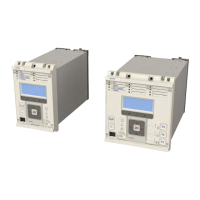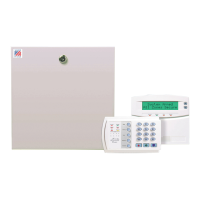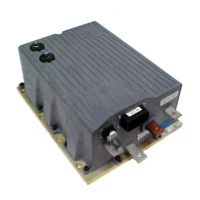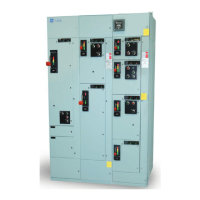2.2 THERMAL REPLICA
The P24xM relay models the time-current thermal characteristic of a motor by internally generating a thermal
r
eplica of the machine. The thermal overload protection can be selectively enabled or disabled. The rms and
negative sequence components of the load current are measured independently and are combined together to
form an equivalent current, I
eq
, which is supplied to this replica circuit. The heating effect in the thermal replica is
produced by I
eq
2
and so takes into account the heating effect due to both positive or rms and negative sequence
components of current.
The equivalent current for operation of the overload protection is in accordance with the following expression:
I
eq
= Ö(I
RMS
2
+ K I
2
2
)
Where:
I
RMS
= Root mean square current
I
2
= Negative sequence current
K = A user settable constant proportional to the thermal capacity of the motor.
The temperature of a motor rises exponentially with increasing current. When current decreases, the temperature
also decreases in a similar manner. Therefore, to achieve close sustained overload protection, the P24xM relay
incorporates a wide range of thermal time constants. These allow the relay replica to closely match the protected
motor during heating and cooling.
Furthermore, the thermal withstand capability of the motor is affected by heating in the winding prior to the fault.
The thermal replica is designed to take into account the extremes of zero pre-fault current, known as the 'cold'
condition, and full rated pre-fault current, known as the 'hot' condition. With no pre-fault current, the relay
operates on the 'cold curve'. When a motor is, or has been, running at full load prior to a fault, the windings
dissipate heat and the 'hot curve' is applicable. Therefore, during normal operation, the relay operates in these two
limits, unless programmed to do otherwise.
To protect the motor during all operating conditions, three independently adjustable time constants are employed
in the overload curve:
T1 = Overload time constant applied when the current is between I
th
& 2I
th
.
T2 = Overload time constant applied for currents above 2I
th
.
Tr = Cooling time constant applied when the motor is stopped.
The following equation is used to calculate the trip time for a given current.
Note:
The relay trips at a value corresponding to 100% of its thermal state. The percentage of thermal capacity follows the
relationship %
q
= ( I
eq
/I
th
)
2
x 100.
t = T Ln [(k
2
- A
2
)/(k
2
- 1)]
The following equation is used to calculate the time it takes for the thermal alarm to be set.
t
alarm
= T Ln [(k
2
– A
2
)/(k
2
– (Thermal Alarm/100))]
Where:
T = T1 if I
th
< I
eq
<= 2I
th
T = T2 if I
eq
> 2I
th
T = Tr if I
eq
= 0 (CB open)
k = I
eq
/I
th
P24xM Chapter 6 - Current Protection Functions
P24xM-TM-EN-2.1 75
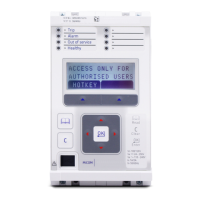
